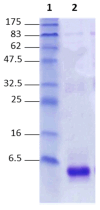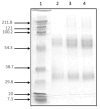Development and Efficacy of the Antivenom Specific to Severe Envenomations in Morocco and North Africa: Advancements in Scorpion Envenomation Management
- PMID: 38787066
- PMCID: PMC11125721
- DOI: 10.3390/toxins16050214
Development and Efficacy of the Antivenom Specific to Severe Envenomations in Morocco and North Africa: Advancements in Scorpion Envenomation Management
Abstract
Scorpion envenomation poses a global public health issue, with an estimated 1,500,000 cases worldwide annually resulting in 2600 deaths. North Africa, particularly Morocco, experiences severe envenomations, mainly attributed to Androctonus mauretanicus and Buthus occitanus in Morocco, and Buthus occitanus and Androctonus australis hector in Algeria and Tunisia, with case numbers often underestimated. Current treatment relies mainly on symptomatic approaches, except in Morocco, where management is limited to symptomatic treatment due to controversies regarding specific treatment. In Morocco, between 30,000 and 50,000 scorpion envenomation cases are reported annually, leading to hundreds of deaths, mainly among children. Controversies among clinicians persist regarding the appropriate course of action, often limiting treatments to symptomatic measures. The absence of a specific antivenom for the venoms of the most lethal scorpions further exacerbates the situation. This study aims to address this gap by developing a monovalent antivenom against the endemic and most dangerous scorpion, Androctonus mauretanicus. The antivenom was produced by immunizing albino rabbits with a mixture of Androctonus mauretanicus venom collected from high-risk areas in Morocco. Immunizations were performed by subcutaneous injections at multiple sites near the lymphatic system, following an immunization schedule. Production control of neutralizing antibody titers was conducted through immunodiffusion. Once a sufficient antibody titer was achieved, blood collection was performed, and the recovered plasma underwent affinity chromatography. The efficacy of purified IgG was evaluated by determining the ED50 in mice, complemented by histological and immunohistochemical studies on its ability to neutralize venom-induced tissue alterations and the neutralization of toxins bound to receptors in the studied organs. The monovalent antivenom demonstrated specificity against Androctonus mauretanicus venom and effective cross-protection against the venom of the scorpions Buthus occitanus and Androctonus australis hector, highly implicated in lethal envenomations in the Maghreb. This study shows that the developed monovalent antivenom exhibits notable efficacy against local scorpions and a surprising ability to neutralize the most lethal envenomations in North Africa. These results pave the way for a new, more specific, and promising therapeutic approach to countering severe scorpion envenomations, especially in Morocco, where specific treatment is lacking.
Keywords: antivenom; cross-reactivity; immunization; neutralization; scorpion venom; toxicity.
Conflict of interest statement
The authors declare no conflicts of interest.
Figures










Similar articles
-
Comparison of the neurotoxic and myotoxic effects of two Moroccan scorpion venoms and their neutralization by experimental polyclonal antivenom.Life Sci. 2015 Mar 1;124:1-7. doi: 10.1016/j.lfs.2014.12.031. Epub 2015 Jan 24. Life Sci. 2015. PMID: 25623852
-
Neutralization Capacity of Tissue Alterations Caused by the Venoms of the Most Dangerous Scorpions in North Africa Using a Selective Antivenom.Toxins (Basel). 2023 Dec 27;16(1):16. doi: 10.3390/toxins16010016. Toxins (Basel). 2023. PMID: 38251233 Free PMC article.
-
Scorpion envenomation and serotherapy in Morocco.Am J Trop Med Hyg. 2000 Feb;62(2):277-83. doi: 10.4269/ajtmh.2000.62.277. Am J Trop Med Hyg. 2000. PMID: 10813485
-
[Scorpion envenomation in Morocco: scorpions of the genus Androctonus, Buthus and Hottentota].Bull Soc Pathol Exot. 2014 Feb;107(1):39-47. doi: 10.1007/s13149-014-0332-7. Epub 2014 Jan 8. Bull Soc Pathol Exot. 2014. PMID: 24402964 Review. French.
-
Epidemiological, toxicological and physiopathological characteristics of scorpion stings and their management in Morocco: A literature review.Acta Trop. 2023 Mar;239:106812. doi: 10.1016/j.actatropica.2022.106812. Epub 2022 Dec 31. Acta Trop. 2023. PMID: 36596437 Review.
Cited by
-
Biochemical characterization and activity profiling of recombinant phospholipase A2 from Hemiscorpius lepturus expressed in E. coli with in vivo antibody response.Sci Rep. 2025 Apr 26;15(1):14609. doi: 10.1038/s41598-025-98261-z. Sci Rep. 2025. PMID: 40287457 Free PMC article.
References
-
- Rein O., The Scorpion Files Norwegian University of Science and Technology Trondheim. [(accessed on 23 August 2021)]. Available online: https://www.ntnu.no/ub/scorpion-files/
-
- El Hidan M.A., Ait Laaradia M., Laghzaoui E.-M., Elmourid A., Touloun O. Trends in Scorpion Diversity and Richness in Morocco. Uttar Pradesh J. Zool. 2021;42:1–7.
MeSH terms
Substances
LinkOut - more resources
Full Text Sources
Miscellaneous

